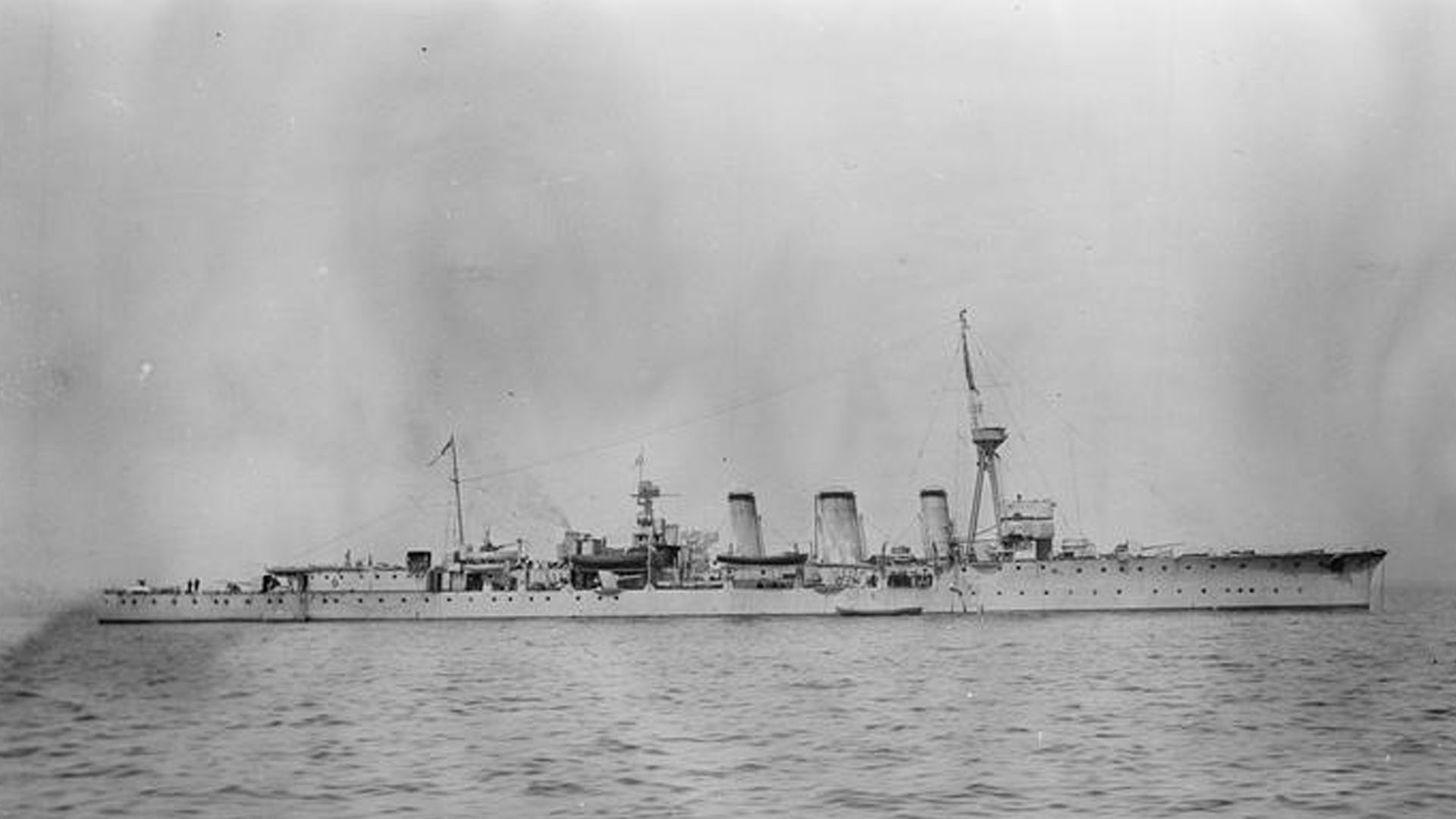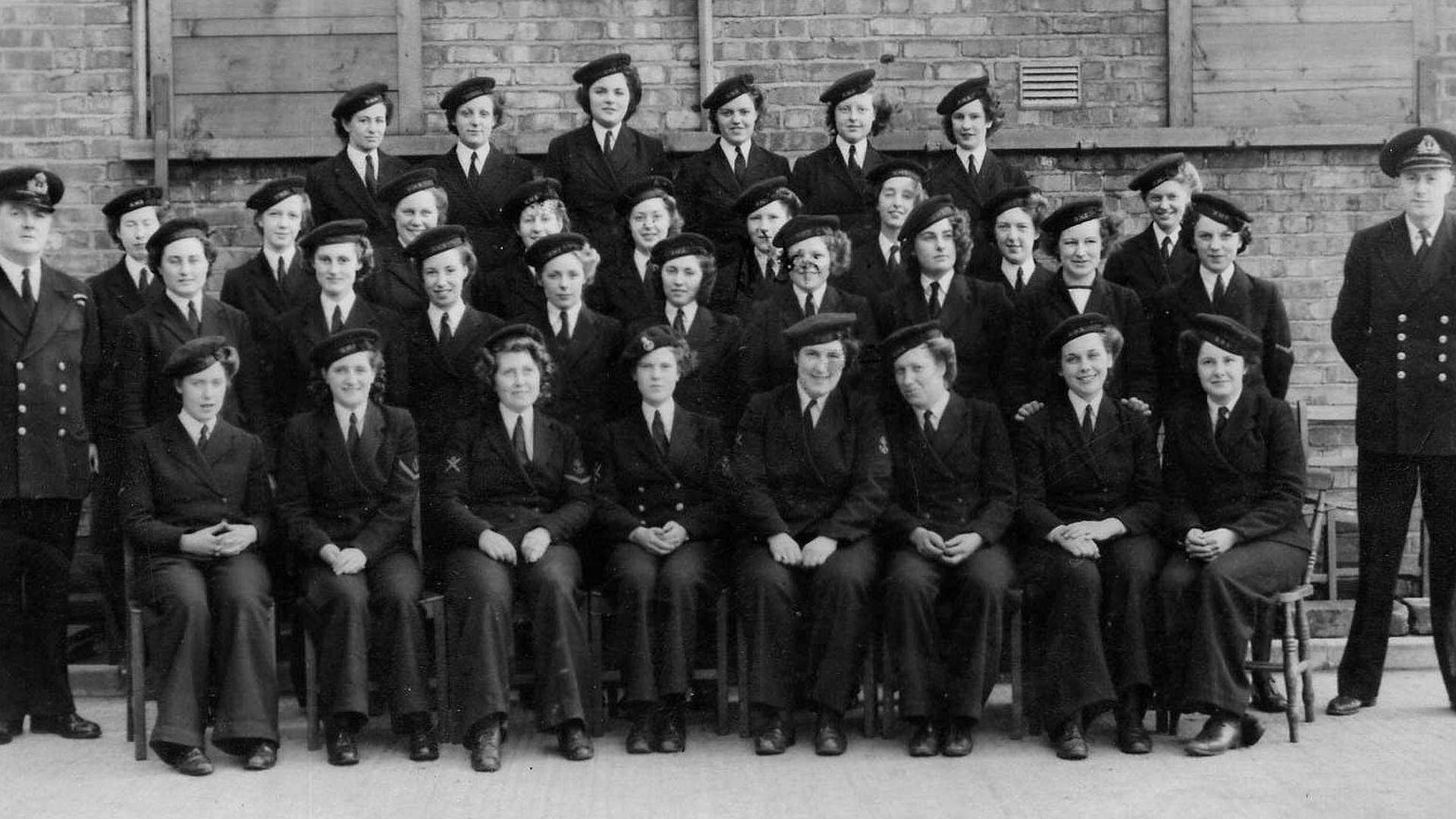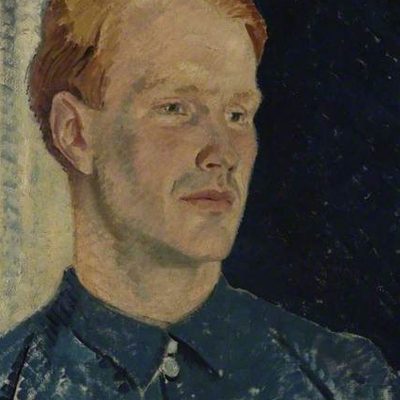Visitors to H.M.S Caroline at Alexandra Dock, Belfast are often aware of the vessel's historic achievements in The Great War. When decommissioned in 2011, Caroline was the second oldest vessel in Royal Navy service and the only surviving vessel of the Battle of Jutland. However, the Belfast-based vessel also played an important role in the Second World War.
Built in 1914 at Cammel Laird Shipyard, Birkenhead, Wirral, England, H.M.S. Caroline sailed under the Royal Navy Ensign in The Great War. The C-Class Light Cruiser saw action at Jutland, the largest naval battle in history before service in the East Indies.
The Royal Navy Cruiser has been in Belfast since its arrival on 7th February 1924. Around this time, the firm of Harland and Wolff Ltd. removed weaponry and some of the vessel’s boilers. From 1st April 1924, it operated as a static headquarters for the Royal Navy Volunteer Reserve Ulster Division. With the outbreak of the Second World War, H.M.S. Caroline also saw use as a training depot and administrative centre for the Royal Navy.
Among the Royal Navy members on H.M.S. Caroline was a pool of replacement Telegraphists and Signalmen. They slept on the mess deck on board the ship and ate their meals on board, just as the crew had during The Great War. Many of these Teleraphists had no real training in Wireless Telegraphy and some were even nervous using a telephone. The T.B.S. or Talking Between Ships communication had less of a formal structure than communications by radio in the Army. Scotsman James Mitchell arrived at H.M.S. Caroline just before Christmas 1943 and recalled that any phonetics were used; even “B for Bugger”. One standard practice, however, was the referral to all vessels in Belfast Lough as “Tinkerbells”.
Belfast Harbour was a hive of activity between 1939 and 1945. The Royal Navy used the harbour as a home base for a strike force of anti-submarine patrol vessels. These vessels, which grew to over 70 in number following the fall of France in 1940, escorted the Atlantic Convoys and the Arctic Convoys.
Throughout the Second World War, the Royal Navy Headquarters outgrew H.M.S. Caroline with establishments at Custom House, Belfast and in Belfast Castle. There were also several repair workshops alongside the vessel berthed in Milewater Basin. Before the establishment of H.M.S. Gadwall in 1943, personnel of the Royal Navy’s Fleet Air Arm lodged under H.M.S. Caroline. Their base was at the nearby Sydenham Airfield. Among them was Fleet Air Arm 804 Squadron who operated Hawker Hurricanes.
As the naval presence continued to grow in Belfast, the fitting out of a new Captain’s Quarters took place to accommodate Rear Admiral Bevan, the Commodore responsible for Belfast Harbour. Under his command were 6 Escort Groups, each consisting of 6 Frigates. As well as a command centre for the 6 Escort Groups, Caroline continued to operate as a training post. William Leonard Harrison recalled being in Belfast in August 1943 learning how to defeat the new GNAT Torpedoes in use by the German U-Boats. Vessels from the Royal Navy Escort Groups took on board new equipment in early October 1943 before returning to their role in the Atlantic.
During wartime, several thousand ratings of the Royal Navy wore the cap tallies of H.M.S. Caroline. Following the Second World War, Caroline returned to the Royal Naval Volunteer Reserve for use as a floating training base. Harland and Wolff Ltd. carried out an extensive refit in 1951, and the vessel’s ensign was laid up at a ceremony in St. Anne’s Cathedral, Belfast.
Since June 2016, H.M.S. Caroline is a floating museum berthed at Alexandra Dock and telling the story of more than 100 years of naval warfare. Refurbishment took place between its decommissioning in 2011 and opening as a tourist attraction in 2016. The National Museum of the Royal Navy, Heritage Lottery Fund, the Department of Enterprise Trade and Investment, and the Heritage Memorial Fund aided the project.
Visitors can experience areas of the Cruiser such as the Captain’s Cabin, the Ward Room, or the Officers’ Dining Room. Onboard exhibits tell the stories of many of those who served on H.M.S. Caroline. There is also a Mess Deck Café and a play area for younger visitors. Newly installed lifts make H.M.S. Caroline a mostly accessible experience for visitors of all abilities. The attraction is due to reopen to the public in 2021.
Wartime events at H.M.S. Caroline
Known at have served at H.M.S. Caroline
References
- B.B.C. Media Centre
- Belfast Live
- Belfast Telegraph
- Belfast Telegraph
- Belfast Telegraph
- Discover Northern Ireland
- History Hub Ulster
- Imperial War Museum
- Imperial War Museum
- Imperial War Museum
- Lennon Wylie
- National Museum Royal Navy
- Royal Navy
- Visit Belfast
- Wikipedia
- Wartime Memories Project
- WW1 Britain's Surviving Vessels




